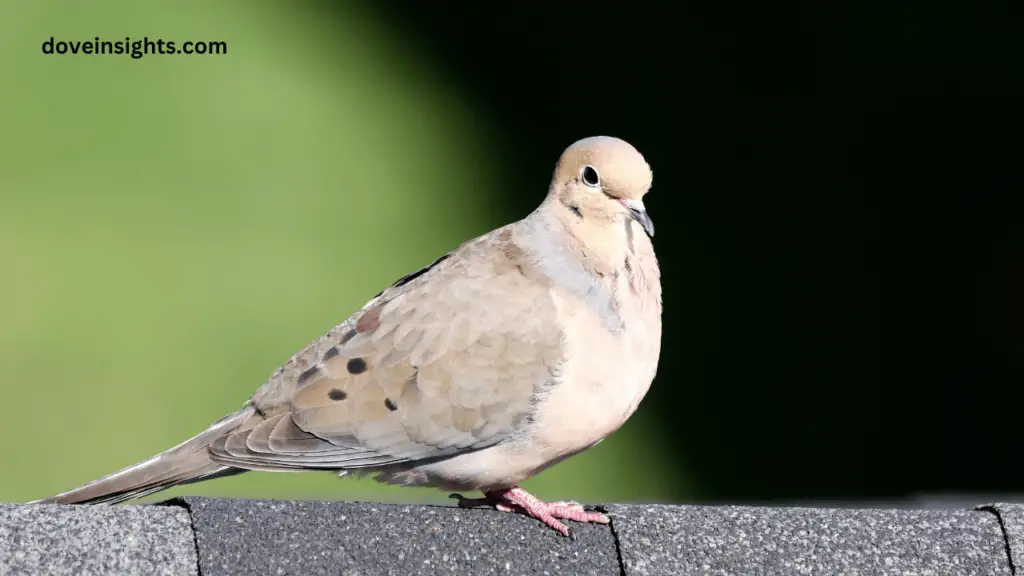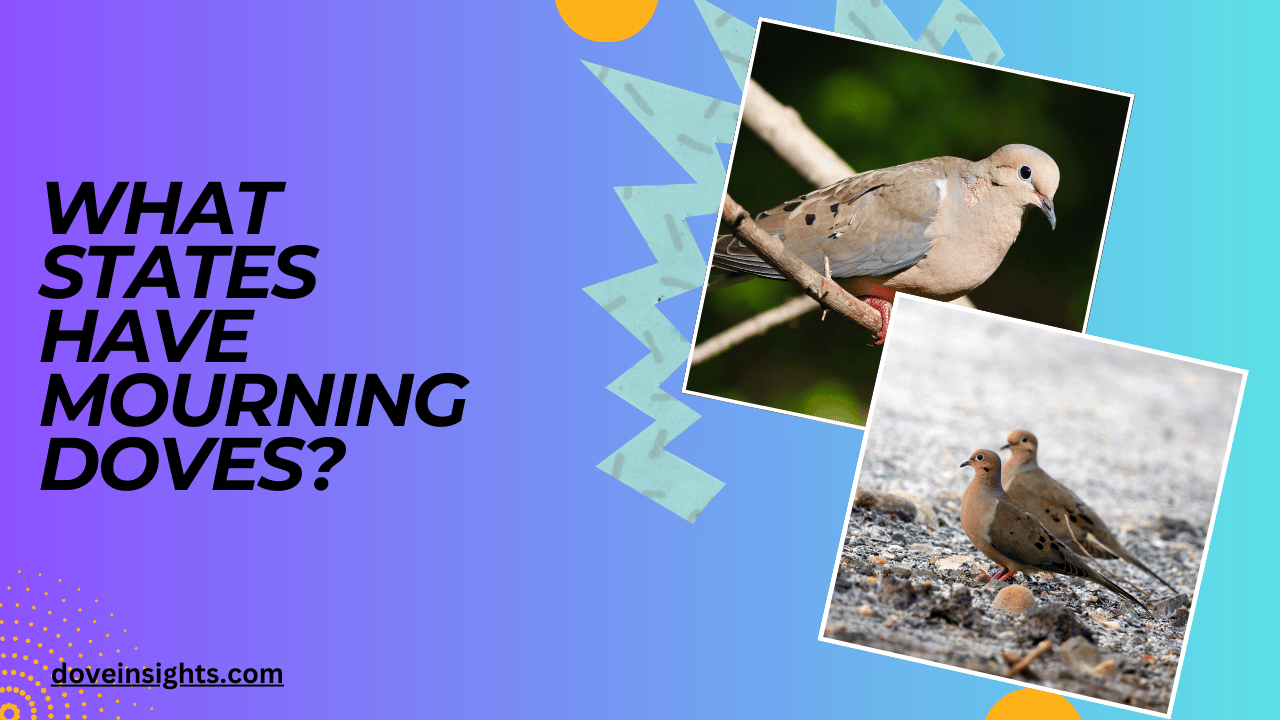The mourning dove is one of the most recognizable birds in North America, known for its gentle cooing and graceful flight.
Often seen perched on telephone wires or fluttering through fields, these birds are a symbol of peace and tranquility. However, there’s more to the mourning dove than its soothing presence—it is a bird with a wide geographical reach across the United States.
From bustling cities to remote wilderness areas, mourning doves are found in many states, but where exactly can you spot them? This article will explore the diverse range of states where mourning doves are found, their migration patterns, and the factors that contribute to their widespread presence.
Whether you’re a birdwatcher or simply curious about these beautiful creatures, understanding where mourning doves reside can enhance your appreciation of them.
This article will help you identify their habitat, track their migration, and discover how these birds adapt to a variety of environments.
Join us as we delve into the states where you can find mourning doves and the ecological reasons behind their expansive distribution.
Contents
The Mourning Dove’s Widespread Presence Across the U.S.
The mourning dove is one of the most abundant and widely distributed birds in North America. Unlike many other bird species that have specific, restricted ranges, mourning doves thrive in a wide range of habitats and can be found in nearly every state in the U.S. from coast to coast.
Their adaptability is a key factor in their expansive range. Whether it’s the warm southern states or the cooler northern climates, mourning doves have been able to adjust and make their home in diverse environments.
In general, mourning doves are commonly found in urban, suburban, and rural areas alike. They are often seen in gardens, farmlands, forests, and even in busy cities.
Because of their ability to thrive in both natural and manmade environments, they are not confined to specific states, unlike many migratory species. This adaptability has made them one of the most familiar birds across the country, making their presence nearly ubiquitous.
However, it is important to note that while mourning doves are widespread, certain states may see a higher concentration of them, particularly during their breeding or migration seasons.
Understanding these patterns can help birdwatchers spot mourning doves and observe them in the wild.
Northern U.S. States and the Mourning Dove
While mourning doves are most commonly associated with warmer climates, they can be found in a range of northern states as well. During the warmer months, mourning doves travel northward from their southern breeding grounds.
States like New York, Michigan, Minnesota, and Wisconsin provide the perfect habitat for them during the summer months, especially in open woodlands, agricultural fields, and suburban areas.
In these northern states, mourning doves are often seen migrating or settling in areas with abundant food sources such as seeds and grains.
The birds are migratory, meaning that in the winter, they will fly south to states with warmer temperatures like Texas, Florida, or Arizona. However, their migration pattern is influenced by the availability of food and weather conditions, which can vary from year to year.
These northern states see mourning doves during the warmer months, and while their presence may decrease in the winter, the birds often return to these regions during the breeding season to raise their young.
The timing of their arrival and departure in these areas depends on the weather and seasonal changes.
Southern U.S. States: The Core Habitat of Mourning Doves
Mourning doves are most commonly found in the southern states, which provide an ideal year-round habitat for them. States like Texas, Florida, Arizona, and California have a consistently warm climate that allows mourning doves to stay active and breed throughout the year.
These states provide a constant supply of food, such as seeds and grains, which are essential for the dove’s diet.
In addition to their warm temperatures, the southern U.S. states offer varied habitats, from urban environments to open farmlands and dense forests.
Mourning doves thrive in these environments because they are highly adaptable birds that can nest in both rural and urban settings. Whether in large cities or isolated rural fields, mourning doves are often spotted perched on fences, power lines, or even rooftops.
These southern states not only provide perfect living conditions for mourning doves but also play a critical role in their breeding season.
The warmth of the southern U.S. allows mourning doves to breed more frequently and produce multiple broods per year, which contributes to their population growth in these regions.
The Role of Habitat in Mourning Dove Distribution
The habitat plays a critical role in determining where mourning doves can thrive. These birds prefer environments that offer ample food sources and safe nesting spots.
Mourning doves are often found in open fields, farmlands, woodlands, and even suburban areas where food such as seeds, grains, and fruits is abundant. Agricultural regions are particularly favorable for mourning doves, as the plowed fields provide an easy source of food.
In addition to food, mourning doves require safe places to nest, such as trees, shrubs, and other elevated areas.
Their preference for nesting in open areas with some form of coverage helps protect them from predators and provides an ideal environment for raising their young. This is why mourning doves are commonly spotted in rural areas where such habitats are plentiful.
As migratory birds, mourning doves also travel to specific areas based on seasonal changes and weather conditions.
For example, in the colder months, they may migrate to states like Texas and California, where the climate is more temperate. This migration ensures they can continue to access their preferred habitats, even when conditions in the northern states are too cold for their survival.
The Impact of Migration on Mourning Dove Populations

Mourning doves are migratory, and their migration patterns are an important factor in understanding their presence in different states.
During the colder months, mourning doves move south to warmer states, including Texas, Louisiana, Florida, and Arizona. This migration allows them to find a more consistent food source and avoid the harsh northern winters.
Migration also plays a role in the distribution of mourning doves across the country. The number of mourning doves in each state can fluctuate throughout the year, with the highest concentrations typically found in the southern U.S. during the winter months.
As the weather warms up, mourning doves move back north to breed and feed.
In terms of population dynamics, mourning doves are considered abundant throughout their range, but their numbers can vary depending on weather patterns and the availability of food.
In years with milder winters, for example, mourning doves may remain in northern states longer, leading to a higher population in these areas.
Conclusion
Mourning doves are widespread across the United States, found in nearly every state, from northern regions to the southern U.S.
Their ability to thrive in a variety of habitats, including urban, rural, and agricultural environments, has contributed to their widespread presence.
While they are most commonly found in the southern U.S., mourning doves also inhabit northern states during warmer months and migrate south during the winter.
Understanding where mourning doves are found is essential for bird enthusiasts and anyone interested in the fascinating migration and behavior of these peaceful creatures.
Whether you’re a birdwatcher in the north or a resident in the south, knowing the states where mourning doves reside will help you better appreciate their beauty and adaptability.
With their graceful flight and soothing coos, mourning doves are a bird that can bring peace and wonder to any landscape across the country.
FAQ’s
Where can mourning doves be found in the U.S.?
Mourning doves are found across nearly every state, from the northern regions during warmer months to the southern U.S. throughout the year.
What is the habitat of mourning doves?
Mourning doves thrive in open fields, woodlands, agricultural areas, and suburban environments, where food and safe nesting sites are available.
Do mourning doves migrate?
Yes, mourning doves are migratory birds, moving from northern states to southern states during colder months.
Which states have the most mourning doves?
Southern states like Texas, Florida, Arizona, and California have the highest populations of mourning doves, particularly during the winter months.
What do mourning doves eat?
Mourning doves primarily eat seeds, grains, and sometimes fruits. They are often seen foraging in fields and gardens.
What is the difference between mourning doves and other doves?
Mourning doves are known for their distinctive mourning-like cooing sound, which sets them apart from other doves.








